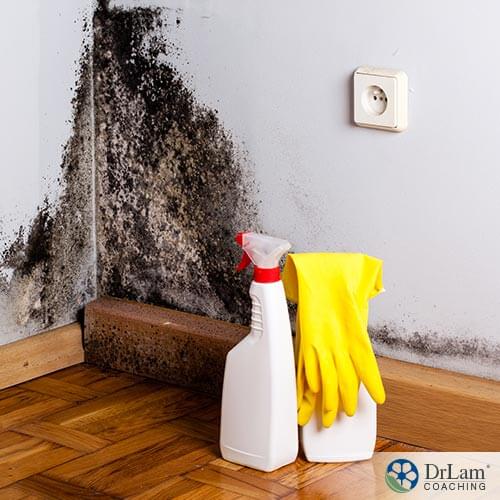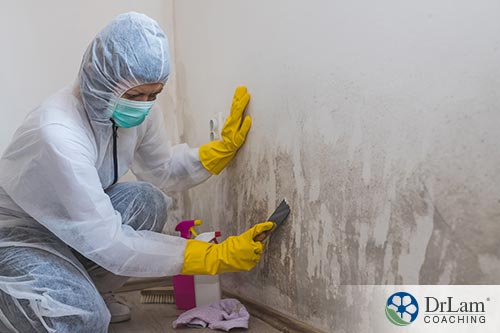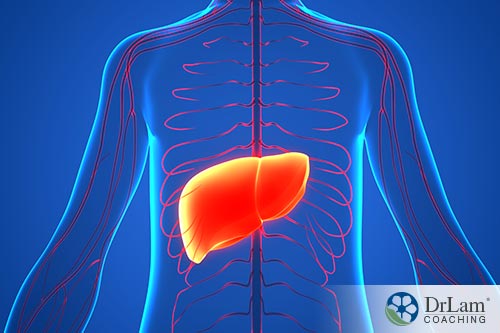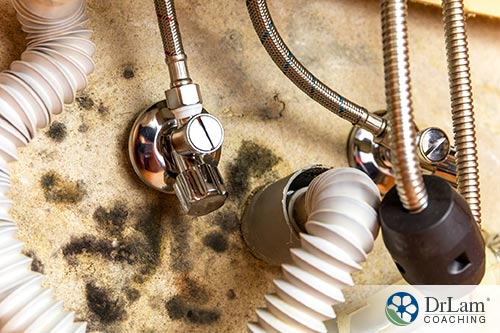 Mold can grow anywhere in the home and many people believe that it can cause a range of problems from cancer to lung disease. Although there’s no evidence that mold can cause these health threats, this doesn’t mean that it’s harmless. There’s a range of mold exposure symptoms that you may experience when you breathe in mold spores. That’s why it’s important that you try to get rid of any mold that you find growing in your house.
Mold can grow anywhere in the home and many people believe that it can cause a range of problems from cancer to lung disease. Although there’s no evidence that mold can cause these health threats, this doesn’t mean that it’s harmless. There’s a range of mold exposure symptoms that you may experience when you breathe in mold spores. That’s why it’s important that you try to get rid of any mold that you find growing in your house.
If you’re concerned about this little pest, then here’s how to know if it’s affecting your health and what to do about it.
» Read our complete long-read article on mold exposure symptoms
» Adrenal Fatigue FAQs
» Take our 3-minute test to see if you may have Adrenal Fatigue
Mold is a fungus and comes in many different forms. Most people worry about so-called "black mold," which may refer to the mold known as Stachybotrys chartarum (S. chartarum). There is some concern that this mold releases toxic substances known as mycotoxins. However, there’s no evidence that this mold is any more dangerous than any other type.
If you’re otherwise healthy and your immune system is strong, you shouldn’t have any problems with mold in low quantities. It’s only when there’s a lot of mold that it becomes dangerous to almost everyone.
However, if your immune system is weak or you’re sensitive to this fungus, then you may experience a range of mold exposure symptoms or health problems to even small quantities.
The mycotoxins that some molds produce can cause mycotoxicosis, often called mold poisoning, in large quantities. Some of the symptoms associated with this issue include:
However, at this stage, there’s no evidence that mold spores cause these symptoms. There is also no evidence that it causes cancer or lung disease or any rare health conditions at all.
However, if you’re sensitive or exposed to high quantities, you are more likely to experience mold exposure symptoms. People who may be sensitive to mold include:
If your body has developed an allergy to mold, you are more likely to experience more severe symptoms. Some of the signs that you’re allergic to mold include:
If you have an allergy, talk to your doctor about the issue. You can also help to reduce your symptoms by:
There’s no test that can show you’ve been exposed to mold. However, if you experience mold exposure symptoms, then you should still see your doctor first. This is particularly true if you’re experiencing problems with your breathing.
However, your doctor will be able to review your symptoms and test for mold allergies. This allergy can get worse over time, so it’s important that it’s identified so you can take action.
To test for allergies, your doctor can perform a blood test to test for certain antibodies to mold. They may also do a skin prick test and apply a tiny piece of mold to your skin. If you’re allergic, then the patch of skin will break out with a rash, bump, or hives.
The best way to get rid of mold exposure symptoms is to remove the mold from your home and anywhere else you find it. However, there are some strategies that can help alleviate your symptoms, particularly if they’re severe. These strategies may include:
 You may not be able to completely rid your home of mold and its spores to avoid mold exposure symptoms. However, you can kill mold on surfaces and avoid creating the dark, damp places mold needs to grow. Hiring a professional is probably the best way to find and remove hidden pockets of mold. However, you can do the following yourself:
You may not be able to completely rid your home of mold and its spores to avoid mold exposure symptoms. However, you can kill mold on surfaces and avoid creating the dark, damp places mold needs to grow. Hiring a professional is probably the best way to find and remove hidden pockets of mold. However, you can do the following yourself:
Make sure that you protect yourself from further mold exposure symptoms by wearing a mask and gloves when you’re looking for or removing mold. You can also wear rubber boots, goggles, or a mold-resistant suit.
Look in dark, warm, moist places for clusters of mold. You should also look for issues that cause dampness in your home such as leaks, water damage, old food, or papers where mold can grow.
Once you’ve found any clusters of mold in your home, make sure you fix the water leak, humidity, or other problem that caused them. You should also throw away any soft and porous material that the mold is growing on.
Once that’s done, you can use a commercial mold removal product to remove mold from hard surfaces that can’t be thrown away. A solution of 10% bleach and 90% water can be used in some cases. Afterward, make sure the area is well ventilated.
Once you’ve removed any mold that you can see, it’s time to work on prevention. There are lots of things you can do to prevent or minimize mold growth in your house. These include:
Any mold exposure symptoms that you experience may cause or worsen adrenal fatigue. Adrenal fatigue is a common complaint because of chronic stress. Many people in the world are constantly stressed these days because of our lifestyles, environmental problems, relationships, and work. The human body just isn’t designed to cope with constant stress, and this can result in Adrenal Fatigue Syndrome (AFS).
When stress is temporary, the NeuroEndoMetabolic (NEM) stress response activates during stressful periods. It helps resolve the stress and gives you the energy and the focus to cope with the cause of the stress. However, when stress becomes chronic, this system is overused and becomes unbalanced.
Cortisol is an essential part of the NEM stress response. It’s released by the adrenal glands and affects every circuit in your body, preparing you to cope with stress. But if your stress isn’t alleviated, the body continues to demand cortisol on an ongoing basis. The adrenals become fatigued from the high workload and can start to fail. This can lead to a whole range of problems and health concerns as the body’s circuits become unbalanced and malfunction.
 The Detoxification circuit is the set of organs and systems responsible for eliminating harmful and nonharmful substances from your body. It consists of the immune system, the liver, and the extracellular matrix (ECM, or the spaces between cells).
The Detoxification circuit is the set of organs and systems responsible for eliminating harmful and nonharmful substances from your body. It consists of the immune system, the liver, and the extracellular matrix (ECM, or the spaces between cells).
The most important duty of this circuit is to remove metabolites from the body. These are substances that are produced by your metabolism in the normal process of operations. When you’re healthy, these metabolites are deactivated and expelled in the background and you’re not aware of them.
But malfunctions in the Detoxification Circuit and the excessive build-up of metabolites can impede this process and have serious health effects.
Here's how mold exposure could affect the Detoxification Circuit and AFS as a whole:
When you have AFS, allergies, or autoimmune issues, your immune system is often overactive. This contributes to inflammation and increased susceptibility to infection and illness. Mold exposure symptoms will only worsen immune system overactivation, creating a constant threat, and can thus worsen Detoxification issues, AFS, and other conditions as well.
Constant stress also increases your chances of developing mold allergies or other reactions to the mold spores. When the immune system is overactive, allergies become more common and frequent, putting additional stress on the body.
Malfunctions in the immune system also make you more susceptible to developing fungal infections as a result of exposure to mold spores.
The ECM is the fluid-filled spaces between the cell walls. This is where chemical messages travel between the cells. These spaces can become clogged with metabolites, impeding the communication between the cells. If this situation isn’t alleviated, the ECM can become completely congested with metabolites.
Mold exposure symptoms or allergies will cause more stress and the production of more metabolites. This will add to the congestion in the ECM, causing more inflammation and more stress.
The liver is responsible for deactivating and expelling harmful metabolites. But as metabolite numbers build because of stress and malfunctions with the immune system as well as adrenal fatigue, liver function can start to slow down. Metabolites then build up in the liver and are released back into the bloodstream and the ECM without being deactivated. This can result in greater numbers of toxic metabolites in the ECM, worsening immune system overactivation and dysfunction.
When this occurs, you will be more likely to react badly to mold spores. You will also be more likely to develop an infection from them.
Mold is generally harmless in small amounts, but it’s still important that you remove it from your home. If you’re unwell or the mold spreads, then you may experience a range of mold exposure symptoms that will not only impact your immediate health, but that could have long-term consequences. Here’s what you need to know about mold exposure:

If you’ve been exposed to mold or other allergens, you can talk to one of our team by clicking here to use the ask a doctor system or by calling +1 (626) 571-1234.
» Read our complete long-read article on mold exposure symptoms
» Adrenal Fatigue FAQs
» Take our 3-minute test to see if you may have Adrenal Fatigue
Common mold exposure symptoms usually occur when you’re exposed to high quantities of spores, when your immune system is weaker, or when you have allergies. These symptoms can be very similar to other allergies, so talk to your doctor if you’re concerned.
